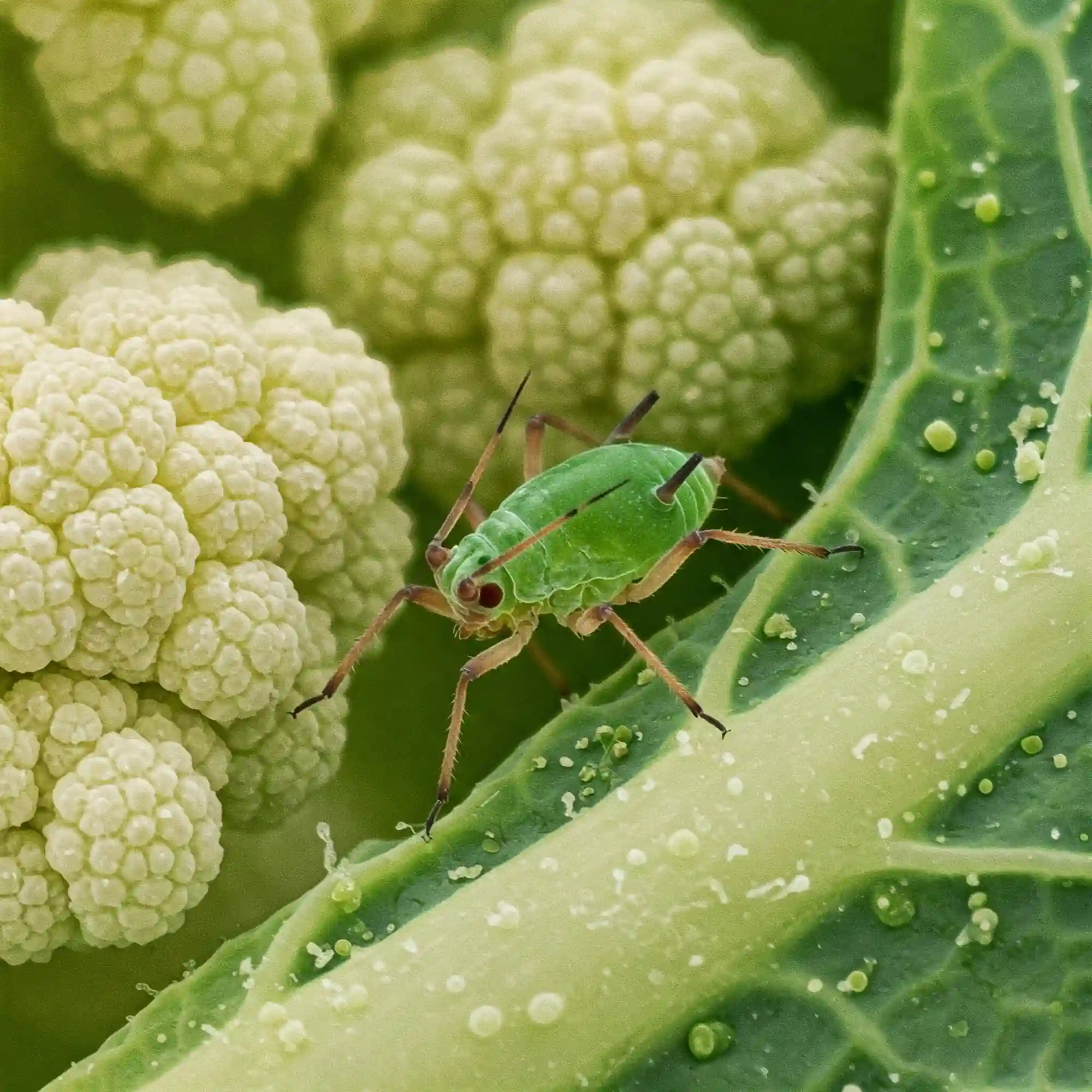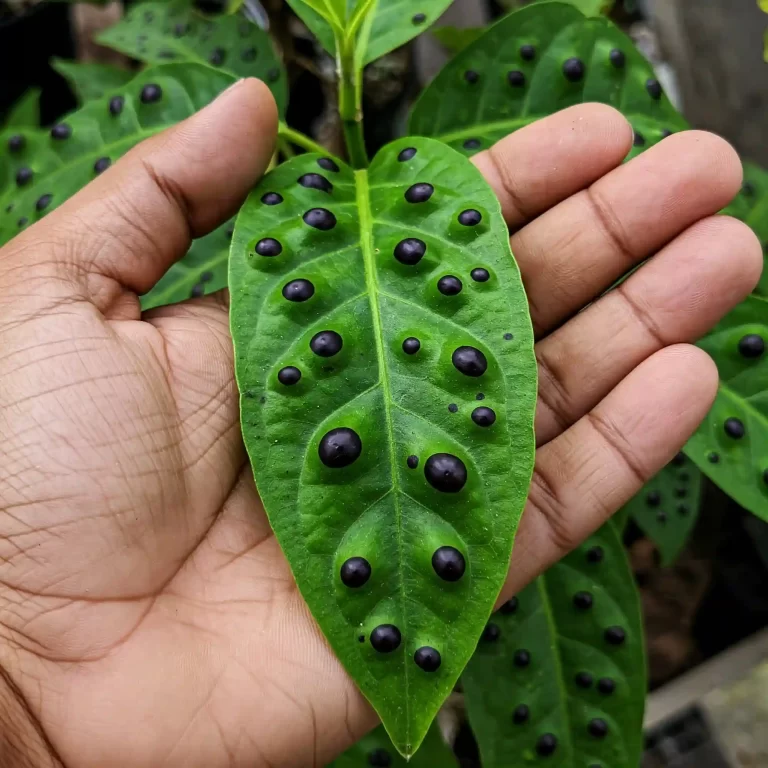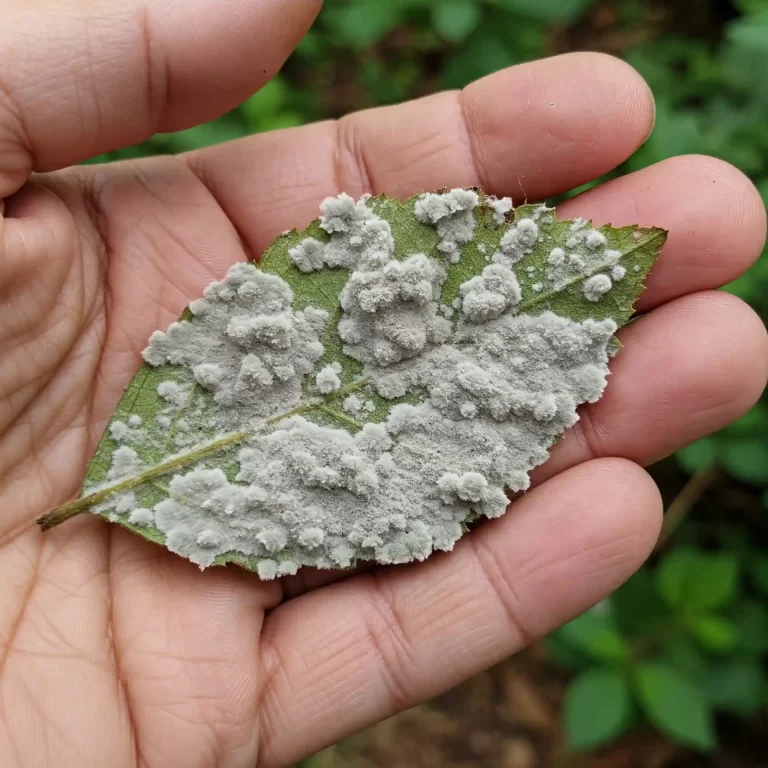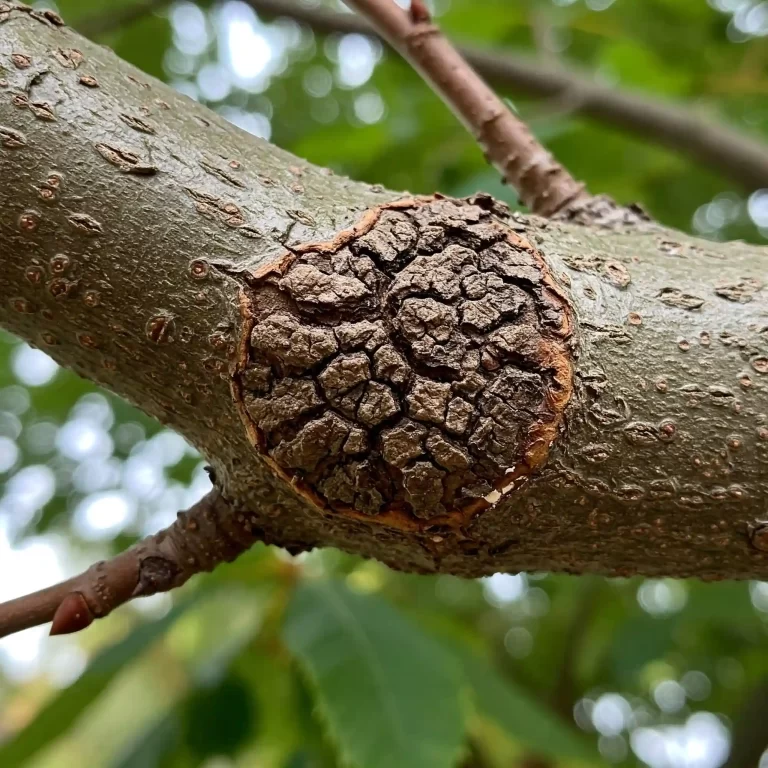Have you ever noticed your cauliflower leaves displaying strange, mottled patterns? It’s frustrating to see your hard work threatened by an unseen enemy. That’s the problem: you’re dealing with a potential Cauliflower Mosaic Virus (CaMV) infection, and the uncertainty is unsettling. The leaves, once vibrant, now show signs of distress, casting a shadow over your garden’s health. You’re not alone
What is Cauliflower Mosaic Virus?
You’ve been working hard in your garden, nurturing your cauliflower plants, only to see them start to look sick. Leaves might be mottled or distorted, and the heads may not form properly. This could be a sign of a viral infection, and one of the most common culprits is Cauliflower Mosaic Virus (CaMV).
So, what exactly is CaMV? Viruses are tiny infectious agents that can wreak havoc on plants. They are much smaller than bacteria and lack the cellular machinery to reproduce independently. Instead, they rely on hijacking the host cell’s machinery to make copies of themselves. CaMV is a type of DNA virus, meaning its genetic material is made up of deoxyribonucleic acid. This virus specifically targets plants in the Brassicaceae family, which includes cauliflower, broccoli, cabbage, and Brussels sprouts.
When CaMV infects a cauliflower plant, it disrupts the normal growth and development of the plant cells. The virus interferes with the plant’s ability to produce chlorophyll, the pigment responsible for photosynthesis. This leads to the characteristic mosaic pattern of light and dark green areas on the leaves. Infected plants may also exhibit stunted growth, distorted leaves, and reduced head formation. In severe cases, the cauliflower heads may become completely unusable.
Symptoms of CaMV
Recognizing the symptoms of CaMV is crucial for early detection and management. Here are some of the common signs to look out for:
- Leaf Mosaic: This is the most characteristic symptom of CaMV. It involves a mottled pattern of light and dark green areas on the leaves. The severity of the mosaic can vary depending on the plant variety and the strain of the virus.
- Leaf Distortion: Infected leaves may become distorted, wrinkled, or puckered. The edges of the leaves may also become curled or crinkled.
- Stunted Growth: CaMV can significantly stunt the growth of infected plants. The plants may appear smaller and weaker than healthy plants.
- Reduced Head Formation: In cauliflower, the formation of the curd (the edible head) may be severely affected. The heads may be small, misshapen, or fail to develop altogether.
- Yellowing or Browning of Leaves: In some cases, the leaves of infected plants may turn yellow or brown and eventually die.
If you suspect that your cauliflower plants are infected with CaMV, it’s important to take action promptly. Early detection and management can help to minimize the impact of the virus on your crop.
Remember: Early detection and management are key to minimizing the impact of CaMV on your cauliflower crop.
How Does CaMV Spread?
Understanding the mechanisms of CaMV spread is crucial in devising effective prevention strategies. This virus employs a few key tactics to infiltrate your cauliflower plants:
1. Aphids as Vectors: The most common mode of CaMV transmission is through the activities of aphids. These tiny, sap-sucking insects act as vectors, carrying the virus from infected plants to healthy ones. As aphids feed on an infected plant, they acquire the virus. When they subsequently feed on a healthy plant, they can transmit the virus, initiating a new cycle of infection.
2. Contaminated Tools and Equipment: CaMV can also be transmitted through contaminated tools and equipment. If you use pruning shears, knives, or other tools on an infected plant, the virus can remain on the surface of these tools. If you then use these tools on healthy plants without proper sanitation, you can inadvertently spread the virus.
3. Infected Seeds: Although less common, CaMV can also be transmitted through infected seeds. If the seeds themselves are infected with the virus, the resulting plants will be infected from the very beginning. This highlights the importance of using certified virus-free seeds.
The Role of Aphids in CaMV Transmission
Aphids are particularly efficient vectors of CaMV due to their feeding habits. They pierce plant tissues with their needle-like mouthparts to extract sap. During this process, they can acquire the virus from infected plants. When they subsequently feed on healthy plants, they can inject the virus into the plant’s vascular system, initiating a new infection.
Several aphid species are known to transmit CaMV, including the green peach aphid (Myzus persicae) and the cabbage aphid (Brevicoryne brassicae). These aphids are highly mobile and can quickly spread the virus throughout a garden or even a larger field.
Preventing Aphid-Mediated Transmission
Several strategies can be employed to minimize the risk of aphid-mediated CaMV transmission:
- Monitor for Aphid Infestations: Regularly inspect your cauliflower plants for the presence of aphids. Early detection allows for prompt control measures.
- Use Insecticidal Soap or Neem Oil: These natural insecticides can effectively control aphid populations without harming beneficial insects.
- Introduce Natural Predators: Encourage the presence of natural aphid predators in your garden, such as ladybugs and lacewings.
Sanitation Practices to Prevent CaMV Spread
Proper sanitation practices are essential to prevent the spread of CaMV through contaminated tools and equipment:
- Clean and Disinfect Tools: After working with any plant, especially if you suspect it might be infected, thoroughly clean and disinfect your tools. A solution of bleach and water can effectively kill the virus.
- Wear Gloves: Wearing gloves when working with plants can help prevent the accidental spread of the virus from one plant to another.
Using Virus-Free Seeds
Using certified virus-free seeds is another crucial step in preventing CaMV infections. These seeds are rigorously tested to ensure they are free from the virus, minimizing the risk of introducing CaMV into your garden.
Understanding the various ways in which CaMV can spread is vital for implementing effective prevention and management strategies. By taking proactive measures to control aphids, sanitize tools, and use virus-free seeds, you can significantly reduce the risk of this devastating disease impacting your cauliflower crop.
How to Prevent CaMV
The best defense against CaMV is a proactive approach that focuses on prevention. By implementing a combination of strategies, you can significantly reduce the risk of this virus impacting your cauliflower crop.
1. Planting Virus-Resistant Varieties: One of the most effective ways to prevent CaMV is to plant cauliflower varieties that have been bred for resistance to the virus. These resistant varieties have been genetically engineered to withstand infection or to limit the severity of symptoms. When selecting seeds, look for varieties that are specifically labeled as “CaMV-resistant” or “virus-resistant.”
2. Controlling Aphids: As mentioned earlier, aphids are the primary vectors of CaMV. Implementing strategies to control aphid populations is crucial for preventing the spread of the virus. Here are some effective methods:
- Natural Predators: Encourage the presence of natural aphid predators in your garden. Ladybugs, lacewings, and parasitic wasps are natural enemies of aphids and can help keep their populations in check.1 You can attract these beneficial insects by planting flowering plants that provide nectar and pollen.
- Insecticidal Soap and Neem Oil: These natural insecticides can be effective in controlling aphid populations without harming beneficial insects. Apply these products according to the manufacturer’s instructions, ensuring thorough coverage of the plants.
- Row Covers: Using row covers can help to exclude aphids from your cauliflower plants. However, ensure that you remove the row covers during pollination to allow for proper pollination.
3. Sanitizing Tools and Equipment: Proper sanitation practices are essential to prevent the spread of CaMV through contaminated tools and equipment.
- Clean and Disinfect Tools: After working with any plant, especially if you suspect it might be infected, thoroughly clean and disinfect your tools. A solution of bleach and water can effectively kill the virus.
- Wear Gloves: Wearing gloves when working with plants can help prevent the accidental spread of the virus from one plant to another.
4. Using Virus-Free Seeds: Using certified virus-free seeds is another crucial step in preventing CaMV infections. These seeds are rigorously tested to ensure they are free from the virus, minimizing the risk of introducing CaMV into your garden.
By implementing these prevention strategies, you can significantly reduce the risk of CaMV impacting your cauliflower crop. Remember, prevention is always better than cure. Proactive measures can help you protect your plants and ensure a bountiful harvest.
How to Manage CaMV
While prevention is the cornerstone of CaMV management, there are strategies you can employ if your cauliflower plants become infected. Remember, these measures aim to limit the spread of the virus and minimize crop losses.
1. Removing Infected Plants: If you discover plants with clear symptoms of CaMV, the most effective management strategy is to remove and destroy them immediately. This prevents the virus from spreading to neighboring healthy plants through aphids or contaminated tools. Dispose of infected plants in the trash or burn them to prevent the virus from spreading.
2. Crop Rotation: Crop rotation involves planting different crops in the same area each year. This helps to break the cycle of infection and reduce the build-up of soil-borne pathogens, including viruses. Avoid planting cauliflower or other susceptible Brassica crops in the same location for at least two years.
3. Using Reflective Mulch: Using reflective mulches, such as silver or white plastic sheets, can help to deter aphids. Aphids are repelled by the bright light reflected from the mulch, making it less attractive for them to settle on your plants.
Additional Management Strategies:
- Avoid Overcrowding: Overcrowded plants create a more favorable environment for aphids to thrive. Ensure proper spacing between plants to allow for good air circulation and reduce aphid populations.
- Monitor for Aphids: Regularly inspect your plants for aphid infestations. Early detection allows for prompt control measures, such as applying insecticidal soap or introducing natural predators.
Remember: While these management strategies can help to limit the impact of CaMV, they are not always foolproof. Prevention is always the most effective approach. By implementing the prevention strategies discussed earlier, you can significantly reduce the risk of CaMV infections and ensure a healthy and productive cauliflower crop.
Frequently Asked Questions
Q: How to identify early symptoms of Cauliflower mosaic virus?
A: Early detection is crucial for managing CaMV. Keep a close eye on your cauliflower plants for the following symptoms:
- Leaf Mosaic: Look for a mottled pattern of light and dark green areas on the leaves.
- Leaf Distortion: Observe if the leaves are becoming distorted, wrinkled, or puckered.
- Stunted Growth: Monitor for any signs of stunted growth or overall plant weakness.
Q: What are effective treatments for Cauliflower mosaic virus infection?
A: Unfortunately, there is no cure for CaMV infection. Once a plant is infected, it remains infected for life. However, you can take steps to prevent the spread of the virus to other plants.
Q: How does aphid infestation contribute to Cauliflower mosaic virus transmission?
A: Aphids are the primary vectors of CaMV. They acquire the virus while feeding on infected plants and then transmit it to healthy plants as they feed. This makes controlling aphid populations crucial for preventing CaMV spread.
Q: Can Cauliflower mosaic virus affect other cruciferous vegetables besides cauliflower?
A: Yes, CaMV can infect other members of the Brassicaceae family, including broccoli, cabbage, Brussels sprouts, and kale.
Q: What are the long-term effects of Cauliflower mosaic virus on crop yield?
A: CaMV can significantly reduce crop yield. Infected plants may produce smaller, misshapen heads, or no heads at all. In severe cases, the virus can cause significant economic losses for farmers and home gardeners.
Remember: Early detection and prevention are key to managing CaMV. By implementing the strategies outlined in this article, you can protect your cauliflower plants and ensure a healthy and productive harvest.
Conclusion
Cauliflower Mosaic Virus (CaMV) can be a significant threat to cauliflower crops, causing significant yield losses and impacting the quality of the harvested heads. However, by understanding the virus, its transmission pathways, and implementing effective prevention and management strategies, you can protect your plants and ensure a successful harvest.
Remember, prevention is always the most effective approach. By planting virus-resistant varieties, controlling aphids, practicing proper sanitation, and using virus-free seeds, you can significantly reduce the risk of CaMV infection. If your plants do become infected, prompt removal of infected plants and implementing crop rotation strategies can help to limit the spread of the virus.
By staying vigilant and taking proactive steps, you can protect your cauliflower crop from CaMV and enjoy a bountiful harvest of healthy, delicious cauliflower heads.




